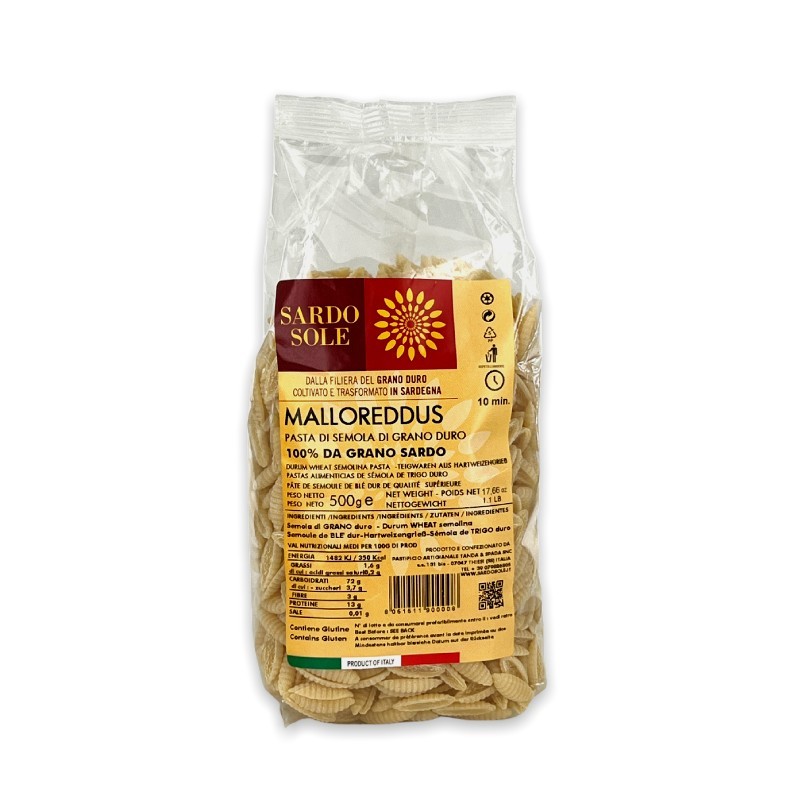




Malloreddus are the typical pasta of the Medio Campidano area of Sardinia.
The dough is simple and essential: durum wheat semolina and water.
Durum Wheat Semolina
Contains gluten
The name Malloreddus could be a legacy of the Roman Empire, when Sardinia was the granary of Rome and mallus was Latin for gnocco.
More romantically, the name could be a legacy of the Sardinian pastoral world, where the pot-bellied shell of the gnocco, in the popular imagination, evoked the belly of the fat calf, called malloreddus in dialect.
It may interest you
Semolina Malloreddus are one of the most popular Sardinian specialities in Italy and around the world. This fresh pasta is made from durum wheat semolina and water and is traditionally processed by hand. Thanks to their porous texture and special shape, malloreddus are ideal for absorbing sauces and condiments, enhancing their flavour. In Sardinia, semolina malloreddus are often combined with pork sauces, but also with seafood sauces. Thanks to their versatility, malloreddus can be used in many combinations, both with traditional sauces and with more creative preparations, such as porcini mushrooms with seasonal vegetables. In any case, semolina malloreddus is a true queen of Sardinian cuisine, never disappointing those who want to discover the flavours and aromas of the island.
Semolina pasta is one of the mainstays of Sardinian cuisine, and malloreddus is one of its most traditional dishes. These small gnocchi, also known as 'Sardinian gnocchetti', are usually made with durum wheat semolina and water, but can be enriched with potatoes or saffron. Their history dates back to ancient times, when Sardinian shepherds used to prepare them with the ingredients at their disposal, such as spring water and wheat semolina.